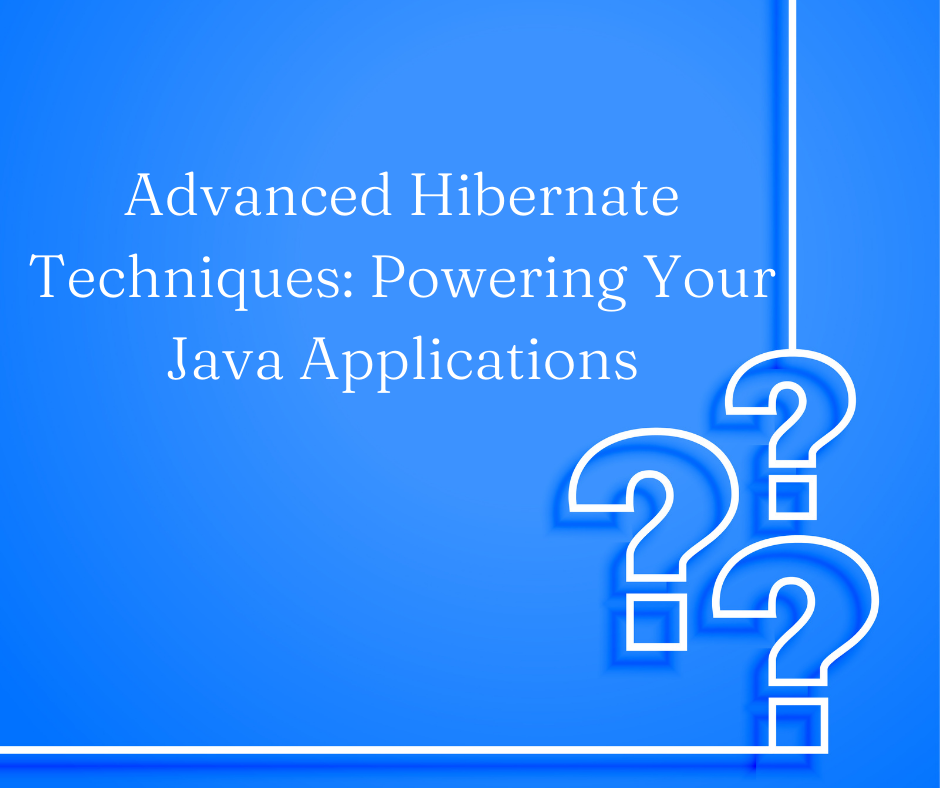Hibernate is a popular object-relational mapping (ORM) framework for Java applications. It provides a layer of abstraction between the database and the application code, making it easier to develop and maintain database-driven applications.
Hibernate offers a number of advanced features that can help you to write more efficient and performant Java applications. In this blog post, we will discuss some of these advanced Hibernate techniques.
1. Caching
Hibernate can cache database results in memory, which can improve the performance of your application by reducing the number of database queries that need to be executed. Hibernate provides two levels of caching:
- Level 1 cache: This is a cache that is stored in memory within the Hibernate session. It is the fastest type of cache, but it is also the smallest.
- Level 2 cache: This is a cache that can be stored in a separate process, such as a distributed cache. It is slower than the level 1 cache, but it is also much larger.
To enable caching in Hibernate, you need to configure the cache provider in your Hibernate configuration file. Once caching is enabled, Hibernate will automatically cache database results in the level 1 cache. You can also explicitly cache database results in the level 2 cache using the @Cache annotation.
2. Criteria API
The Hibernate Criteria API is a powerful tool for writing dynamic database queries. It allows you to construct queries using a Java-like syntax, without having to write any SQL.
To use the Criteria API, you need to create a Criteria object. You can then use the Criteria object to specify the criteria for the query, such as the entity type, the properties to be returned, and the conditions to be applied.
Once you have created the Criteria object, you can execute it using the list() or uniqueResult() methods. These methods will return a list of entities or a single entity, respectively.
3. Hibernate Query Language (HQL)
HQL is a powerful query language that is specific to Hibernate. It allows you to write database queries using a SQL-like syntax.
To use HQL, you need to create a Query object. You can then use the Query object to specify the HQL query. Once you have created the Query object, you can execute it using the list() or uniqueResult() methods.
HQL is a more powerful and flexible query language than the Criteria API. However, it is also more complex and requires more knowledge of SQL.
4. Native SQL Queries
If you need to execute a SQL query that is not supported by HQL, you can use the Hibernate native SQL query feature.
To execute a native SQL query, you need to create a NativeQuery object. You can then use the NativeQuery object to specify the SQL query and the entity type to be returned. Once you have created the NativeQuery object, you can execute it using the list() or uniqueResult() methods.
5. Transaction Management
Hibernate provides a number of features for managing database transactions. For example, you can use Hibernate to control the transaction boundaries, to commit or rollback transactions, and to handle transaction exceptions.
To use Hibernate transaction management, you need to start a transaction before you perform any database operations. You can then commit or rollback the transaction at the end of your operations.
Hibernate also provides a number of features for handling transaction exceptions. For example, you can use Hibernate to automatically rollback a transaction if an exception occurs.
Conclusion
By mastering these advanced Hibernate techniques, you can write more efficient, performant, and scalable Java applications.

